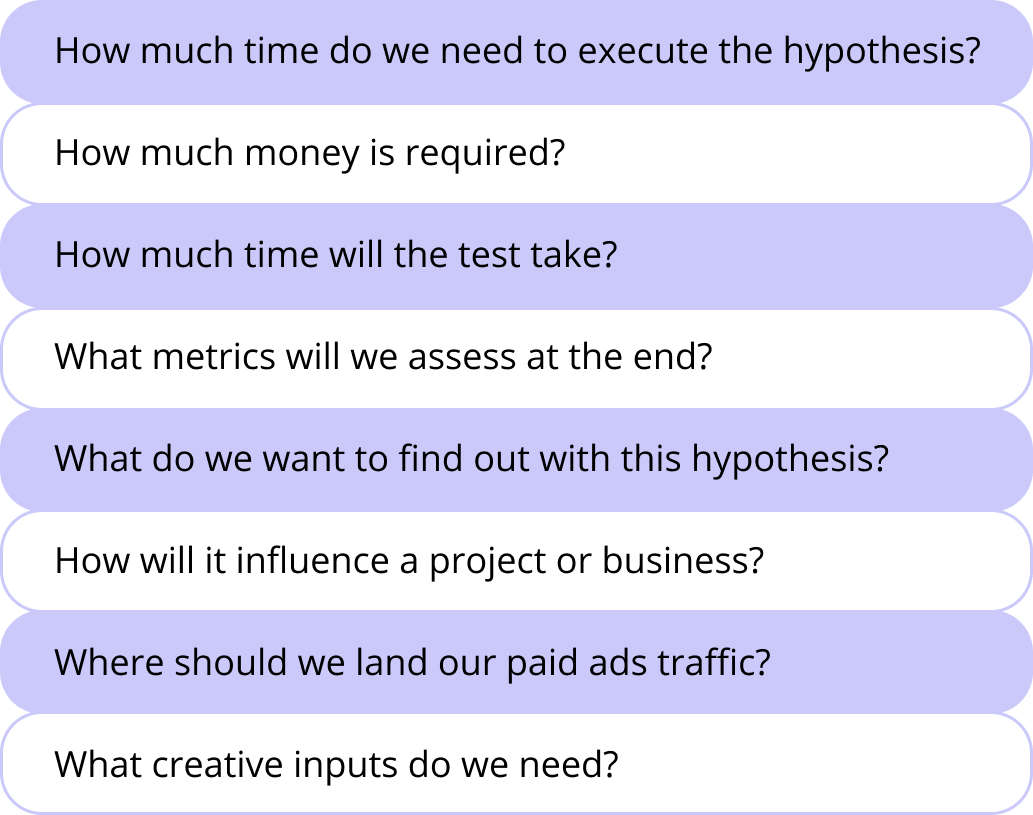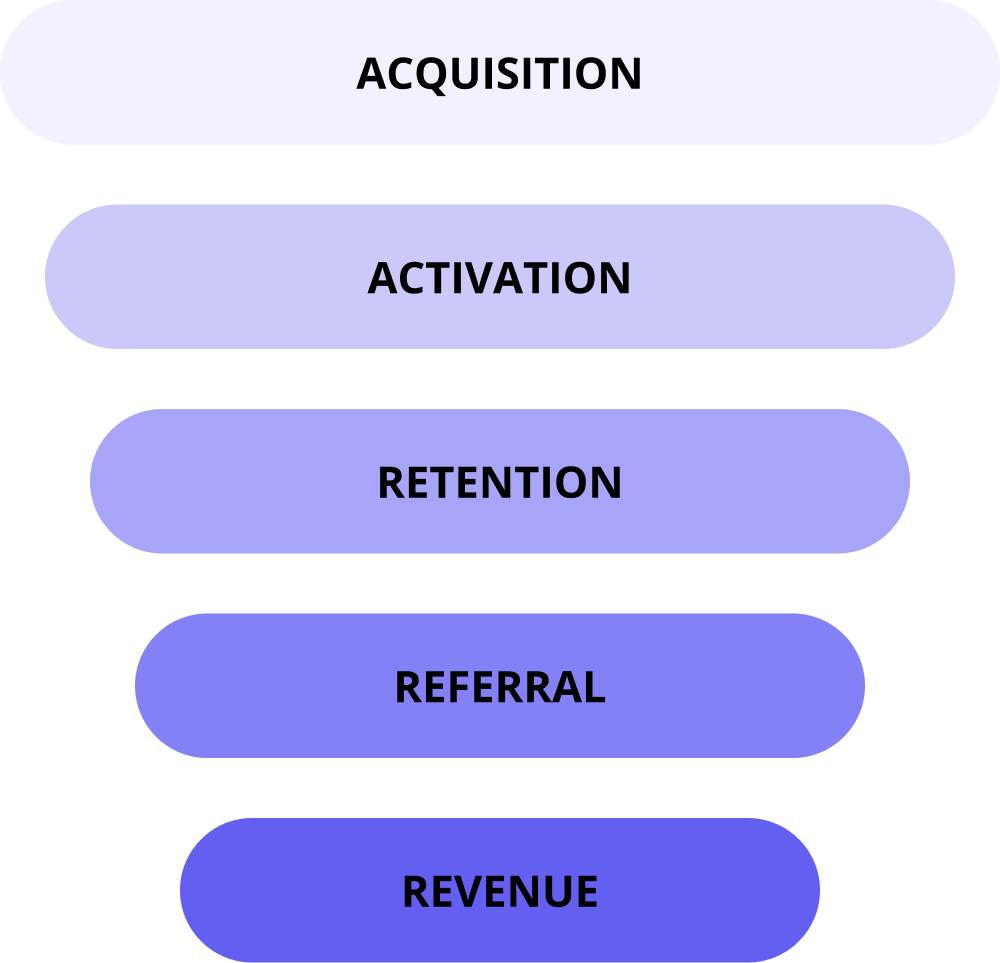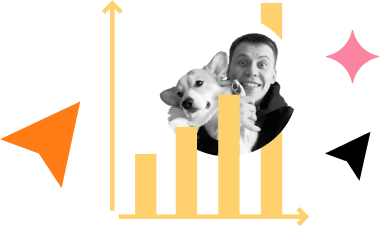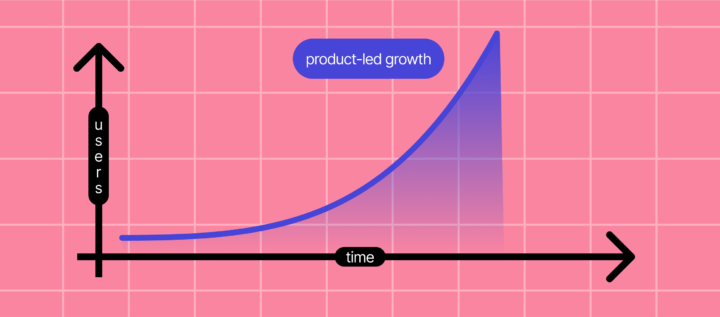Growth Product Manager: Charting new frontiers in product scaling

Welcome aboard the exciting journey of understanding the pivotal role of a Growth Product Manager! From pioneering fresh ideas to steering the ship of a company towards successful growth, these professionals are the new-age navigators of the business world. In this article, we aim to peel back the layers of this incredibly dynamic position.
We’ve got you covered, whether you’re curious about rallying a team towards a common goal, or if you have your eyes set on the trailblazing path of a product growth manager.
Manager growth responsibilities, you ask? We dive deep into the myriad tasks that come with the title. Essential skills that can catapult a growth product manager to success? You bet we’re exploring that. And let’s not kid ourselves, who isn’t intrigued by the potential earning power of these trailblazers in tech?
Buckle up as we traverse the compelling terrain of a product growth manager’s world, promising an enlightening adventure from start to finish. It’s time to discover how these driven professionals strategize, analyze, and channelize their resources to achieve successful growth — not just for products, but for companies as a whole. So, let’s get started, shall we?
What is a product growth manager?
In the bustling arena of today’s business world, Growth Product Managers (GPMs) are both the strategists and the soldiers on the front lines. Hypothetically, if businesses were a chess board, GPMs would be the strategic masterminds moving the pieces towards victory — but also the knights, bishops, and rooks that bring the strategy to life.
A Growth Product Manager is a professional who applies growth hacking principles to product management. Essentially, they employ a blend of marketing acumen and technical knowledge to ensure a product thrives in the market. Their key responsibilities encompass understanding customer needs, guiding product development in accordance with those needs, and then propelling the product’s market growth using robust, data-driven strategies.
In the specific realm of SaaS companies, they play an even more crucial role. The versatility of a Growth Product Manager’s skills becomes abundantly clear when they tackle unique SaaS challenges such as customer acquisition, retention, and churn.
Growth Product Managers are exceedingly proficient in spotting trends and identifying potential growth opportunities. Armed with a deep understanding of their industry, growth product manager’s role involves using analytics to drive decisions, and implementing innovative strategies that catalyze product adoption, enhance user experience, and eventually, boost the company’s bottom line.
Hence, a growth product manager can be the catalyst that transforms a good SaaS product into a great one, launching it from the realms of the ordinary and propelling the company towards exponential growth. In a nutshell, they are the vital ingredients that give your growth recipe that perfect zest, helping you serve a deliciously successful SaaS business to the market.
What is Product-Led Growth?
Product-led Growth (PLG) is a business methodology where the core product serves as the primary vehicle driving user acquisition, expansion, and retention. In essence, it’s about allowing your product to take center stage and letting its value proposition, user experience, and design speak volumes about your company.
PLG can catapult your business forward in many ways:
- By delivering a superior product that solves a real customer problem, you can attract customers who are willing to advocate for your brand.
- By focusing on the user journey within your product design, you can create engaged customers who not only stick around but also grow with your product over time.
This approach is a boon for a variety of businesses, particularly those in the SaaS, B2B, and B2C spaces. Companies that offer products with a significant learning curve, such as design platforms and project management tools, can especially benefit from the PLG approach. It offers their customers a chance to explore and appreciate the product’s value before making a purchasing decision.
Now, enter the Growth Product Manager, the torchbearer of the PLG methodology. The role of GPMs is integral to its success. They align the company’s growth strategy with the core product, ensuring its design and inherent functionalities align with the long-term goal of user acquisition and retention.
Growth Product Managers (or Core PMs, as they’re often called in a PLG SaaS context) are at the helm of orchestrating a product that’s captivating enough to sell itself. They:
- Work relentlessly to understand customer needs;
- Carve out a winning product development strategy;
- Ensure that the product design reflects the market demand.
By leveraging data and customer feedback, they continually refine the product, making sure it remains the north star guiding the company’s growth journey.
In conclusion, the role of the Growth Product Manager in a PLG strategy is twofold. They ensure that the core product is built with user demands and market trends in mind, and they devise growth strategies that make the product the main attraction, luring in customers and keeping them hooked.
Thanks! Now check your inbox

What is growth product management?
Growth Product Management, at its core, is an ingenious blend of product management and growth hacking. It’s all about creating, managing, and optimizing products to reach accelerated growth rates. Think of it as supercharging the product management process with an extra dose of growth-hacking DNA.
This approach is a strategic team sport, wherein Growth PMs don’t just curve out the trajectory of a product, but they also align it with the expansive vision of the company. They’re the visionaries who know when to steer the ship and when to let the winds of market trends guide them.
How does growth product management work, you ask?
- Growth PMs kick-off by identifying key metrics that present the most potential for the product’s growth.
- They meticulously analyze user behavior data, breaking it down into actionable insights.
- They then align these insights with the product strategy, creating a framework that marries user satisfaction with business goals.
Let’s not forget the experimentation and iteration that Growth PMs thrive on. They implement hypotheses, track results, and don’t shy away from reiterating their strategies based on market responses. They are the relentless testers of the business world, continually finding innovative ways to optimize the product-market fit.
So, why should businesses adopt this approach?
The answer is simple: it’s a model for sustainable, scalable growth. By placing growth at the forefront of product management, businesses can ensure their product isn’t just well-built, but well-grown. It allows the product and the business to evolve together, ensuring neither is left behind in a rapidly evolving market.
In essence, growth product management intertwines the destinies of the product and business, making sure they grow in harmony. It’s like a well-choreographed dance between product managers and growth-tuned strategies that drives sustainable growth while ensuring customer satisfaction—making it an approach businesses can’t afford to overlook.
Growth product manager job description
When it comes to deciphering a growth product manager job description, envision a master chess player, a skilled strategist, and a passionate visionary all rolled into one dynamic role. These professionals straddle the worlds of product management and growth marketing, creating an impactful synergy that propels products and companies to new heights.
A growth product manager is responsible for identifying potential areas of product growth, creating strategies, and leading teams to execute these strategies effectively. They are the engineers of the product growth roadmap, aligning it with the overall business strategy and customer needs.
A significant part of a Growth PM’s day is consumed by data. They are tasked with analyzing user behavior data and market trends, interpreting these intricate data sets into actionable insights. These insights are then used to create, modify, or enhance the product in ways that maximize user satisfaction and drive growth.
Another important aspect of a Growth PM’s job is experimentation. They set up hypotheses related to product features or user behavior, carry out A/B tests, monitor results, and based on the findings, iterate the product or its marketing growth strategy. This constant process of testing, learning, and implementing is the essence of growth marketing, a pivotal part of their job description.
They also collaborate closely with various teams — marketing, sales, design, engineering, and more — to ensure that every piece of the puzzle aligns with the growth strategy.
Overall, the growth product manager job description is about mastering the art and science of product growth. It’s about understanding the product, the market, and the users so deeply that they can guide the product’s journey towards impressive growth while always keeping a finger on the pulse of user needs and market trends. It’s an incredibly dynamic, challenging, and rewarding role that serves as the powerhouse of a product’s success in the marketplace.
Growth product manager responsibilities
In the theater of business growth, Growth Product Managers (GPMs) might be considered the directors — they contribute significantly to the final act, but their work is mostly done behind the scenes. Let’s pull back the curtain on the specific growth product manager responsibilities that help steer businesses towards sustained growth.
Data Analysis and Insights
One of the fundamental responsibilities of a GPM is to analyze data. They dissect user behavior data, product metrics, and market trends to unearth insights that can inform their growth strategies.
Product Development
GPMs play a pivotal role in the product development process. They work closely with the engineering and design teams to ensure the product is built and improved based on their insights.
Growth Strategy Creation
Once they have a deep understanding of the product, the market, and the users, GPMs outline a robust growth strategy. They identify potential areas of growth and create plans to capture these opportunities.
Thanks! Here’s your copy of the growth strategy template

Experimentation and Testing
Innovation is at the heart of a growth product manager’s responsibilities. They set up experiments to test different product features, marketing strategies, or user engagement tactics, and then make data-driven decisions based on the outcomes.
Here are some questions PMs might use to pick hypotheses for testing:

Collaboration and Communication
GPMs act as a bridge between various teams, including marketing, sales, design, and engineering. They communicate their growth strategies across the organization, ensuring all departments are aligned towards the common goal of product growth.
User Retention and Engagement
GPMs constantly devise ways to enhance user experience, keeping user satisfaction and engagement at the forefront. They monitor retention metrics closely, iterate upon existing strategies, and implement new ones to ensure a healthy user base.
Performance Tracking
Growth Product Managers keep a close eye on the metrics that matter. They monitor key performance indicators (KPIs) to measure the success of their growth strategies and to identify areas that need improvement.
In essence, the responsibilities of a Growth Product Manager boil down to two main areas: understanding the product and its market, and using this knowledge to craft a strategy that maximizes growth. With their data-driven approach, they help businesses navigate the road to growth, making them an indispensable part of any team focused on achieving scalable success.
Growth product manager skills
Becoming a Growth Product Manager (GPM) requires more than just mastering the principles of product management. It requires an amalgamation of analytical prowess, strategic thinking, technical expertise, and people skills. Below, we’ll outline the major skills that lay the foundation for success in this role.
- Analytical Skills: Perhaps one of the most crucial growth product manager skills is the ability to analyze complex data. GPMs should be comfortable digging into product metrics, user behavior data, and market trends, and capable of converting these numbers into actionable insights.
- Strategic Mindset: GPMs need to think strategically about product growth. This involves understanding the market, identifying growth opportunities, and creating a robust strategy to capture these opportunities.
- Technical Expertise: A strong understanding of the product’s technology is key. While they don’t need to know how to code, they should understand how their product works, what it’s capable of, and how it can be developed to meet user needs and business goals.
- UX Understanding: Given their close work with the design team, GPMs must have a good grasp of user experience (UX) principles. They need to understand how users interact with their product and how to enhance this interaction to drive growth.
- Collaboration and Communication Skills: As a bridge between various teams, GPMs need to have excellent communication and collaboration skills. They need to be able to share their vision and align multiple stakeholders towards a common growth goal.
- Experimentation and Adaptability: GPMs should be comfortable with testing, learning, and adapting. They must be able to design, implement, and interpret A/B tests, and be willing to pivot their strategy based on the results.
- Leadership and Project Management: Leading teams towards achieving the growth vision requires strong leadership and project management capabilities. GPMs need to manage timelines, resources, and people, ensuring everything runs smoothly and according to plan.
In essence, the magic of a successful Growth Product Manager lies in their ability to wear multiple hats. They juggle the analytical with the creative, the strategic with the operational, and the leadership with the teamwork — all while keeping an unwavering focus on driving product growth. These skills, combined with a passion for products and growth, are the catalysts that transform good GPMs into great ones.
Thanks! Now check your inbox

Growth manager vs product manager
While it’s easy to blur the lines between a growth manager and a product manager due to overlapping areas, understanding the nuances of these two roles can provide us with a clearer perspective. Let’s dissect the similarities and differences to grasp how these positions can shape the destiny of a product and a company.
Both roles, Growth Manager and Product Manager, reside at the intersection of business, technology, and user experience. Both are responsible for understanding the market, knowing the customer, and making decisions that drive business success. They’re both data-driven roles that rely heavily on analytics to guide their strategies, and collaboration is key in both roles as they work hand in hand with teams across the company.
Key differences
However, the primary difference lies in the focus and scope of these roles. While product managers concentrate on the entire lifecycle and roadmap of a product, growth managers focus specifically on growth aspects of the product, using their skills to maximize user acquisition, activation, retention, and revenue.

Product managers often take a wider lens, ensuring the product fits into market needs, overseeing its development, launch, and enhancement based on user feedback and market trends.
They usually work more closely with the engineering and design teams to build a product that aligns with the company’s strategic vision.
Growth managers have a more specialized role. They look for growth opportunities within the product and its market. Using growth hacking strategies, they strive to optimize market reach, boost user acquisition and retention, and propel revenue growth.
They usually work more closely with the marketing and data analysis teams, creating and implementing strategies driven by data and experimentation.
In a nutshell, the difference between a growth manager vs product manager can be likened to the difference between a specialist and a generalist. While both are crucial for a product’s success, their approaches and responsibilities are distinct, yet complementary. For a product to truly thrive, it needs the holistic view of a product manager combined with the growth-focused lens of a growth manager.
Growth product manager vs growth marketing manager
In the realm of business growth, the roles of a Growth Product Manager (GPM) and a Growth Marketing Manager may seem quite similar. Both are integral to a company’s expansion and share a common goal of driving growth. However, the path they tread to achieve this goal can be quite different. In this section, we’ll tackle the distinct yet interconnected roles of these two key players.
First and foremost, let’s uncover the similarities. Both roles are deeply analytical and data-driven in nature. GPMs and Growth Marketing Managers alike use metrics and KPIs to inform their strategies, leveraging data to understand customer behavior and modify their respective approaches. They both also have a significant impact on user experience (UX), albeit in different stages of the user journey.
However, when you delve deeper into the differences, the areas of focus diverge considerably.
Key differences
A Growth Product Manager is primarily concerned with the product. They use data and user feedback to enhance the product’s features and overall usability, constantly seeking ways to improve the product and its foothold in the market.
The GPM’s realm revolves around the product lifecycle, right from conception through to launch and iterative improvements. They work closely with engineering, design, and data science teams to design and implement product changes, always with an eye on optimal growth.
A Growth Marketing Manager focuses more on the promotional side of things. They develop and execute marketing strategies that drive user acquisition, engagement, and retention. Their domain revolves around creating awareness, driving demand, and nurturing leads to conversion and beyond.
They work closely with the marketing, sales, and content teams to amplify the reach of the product and foster a strong brand identity.
In essence, the GPM is the custodian of the product, ensuring it evolves to meet market demands and user needs, while the Growth Marketing Manager is the voice of the product, communicating its value to the world. The difference between a Growth Product Manager vs a Growth Marketing Manager is akin to the difference between ‘making things people want’ and ‘making people want things’. They’re two sides of the same coin, bringing a perfect balance to the brand’s growth journey.
Growth product manager salary
As businesses increasingly recognize the importance of growth-focused product management, the demand for skilled Growth Product Managers (GPMs) has surged. This has made a noticeable impact on the earning potential for GPMs, both in full-time roles and freelance capacities.
According to data from Glassdoor, as of 2022, the average salary for a Growth Product Manager in the United States is around $110,000 to $150,000 per year, with the potential to go even higher depending on the company size, location, and the individual’s experience and skill set.
On the other hand, freelance GPMs can earn significantly depending on their expertise and the scope of projects they undertake. Sites like Upwork and Freelancer have listings for freelance GPMs that range from $50 to $150 per hour or more.
The ultimate decision between hiring a full-time GPM or a freelance expert depends on your specific business needs. While a full-time GPM may provide more consistent oversight and potentially a tighter integration with your company’s culture and processes, a freelance GPM can offer more flexibility and may be a more cost-effective option for short-term projects or smaller companies.
It’s crucial to remember that while growth is often synonymous with financial success, the value a GPM brings extends far beyond their salary. They can offer invaluable insights and strategies to drive product growth, ultimately contributing significantly to the success and bottom line of your business.
Wrapping up
From understanding the role and responsibilities of Growth Product Managers to dissecting the required skills and potential remunerations, we’ve embarked on quite a journey through the world of product growth. As we wrap up, one thing becomes eminently clear: the contribution of a Growth Product Manager to a business can be quite transformative.
Whether it be through identifying and capitalizing on growth opportunities, analyzing data and extracting actionable insights, or driving strategies that enhance user experience and boost user acquisition and retention, the impact of a GPM is deeply intertwined with the trajectory of growth that businesses can achieve.
The truth is, with the right GPM at the helm, navigating through the dynamic currents of market trends and user needs becomes less about just staying afloat and more about catching the wave of success.
In the fast-paced SaaS environment, where customer needs and market dynamics can shift swiftly, having a seasoned Growth Product Manager who keeps an unerring focus on growth can be an invaluable asset. They bring a strategic vision, a data-driven approach, and a relentless zest for optimization that can enhance the user experience of your SaaS product and catalyze your growth journey.
If you’re looking for expert guidance on enhancing the user experience of your SaaS product, look no further. Schedule a consultation with our Dashly experts today, and let’s set the stage for your product growth story!
Improve onboarding and level up overall user experience with Dashly automation tools

FAQ
What does a growth product manager do?
A Growth Product Manager is a professional who combines the principles of product management with growth hacking strategies. They are responsible for identifying potential avenues for product growth, creating strategies to tap into these opportunities, and leading teams to implement these strategies effectively. They analyze data, develop and iterate on the product based on user feedback and data insights, and work closely with various teams such as marketing, sales, design, and engineering. Their ultimate goal is to drive product growth, user acquisition, and retention.
What is the head of growth job description?
The Head of Growth is responsible for driving the growth strategy within a company. This role typically oversees a cross-functional team composed of marketing, sales, product, and data analytics professionals. The Head of Growth’s primary function is to identify growth opportunities, develop strategies to capture these opportunities, and oversee the implementation of these strategies. They’re expected to be data-driven, able to analyze metrics and adjust strategies based on insights, and possess a strong understanding of the market in which their company operates.
What is the director of growth job description?
The Director of Growth is a leadership role focused on accelerating a company’s growth trajectory. The responsibilities include identifying growth opportunities, driving customer acquisition and retention strategies, and developing revenue generation plans. They analyze performance metrics to gauge the effectiveness of growth strategies and make necessary adjustments. This role often involves collaborating with multiple departments, such as sales, marketing, and product development, to align all organizational efforts towards growth objectives.
What is growth hacking product management?
Growth hacking product management is an approach where growth hacking principles are applied to product management. This involves using data analysis, innovative marketing strategies, and user-centric design to drive product growth. The goal is not just to manage the product effectively, but to ensure accelerated growth in user acquisition, engagement, and revenue. It requires a deep understanding of the product, the market, and user behavior, along with an experimental mindset to test, iterate, and optimize the product and its marketing strategies.
What key metrics does a Growth Product Manager track?
A Growth Product Manager tracks various key metrics to gauge the success of their strategies and the overall product growth. These metrics often include:
- User Acquisition: This refers to the number of new users that a product gains within a specific timeframe. Acquisition channels, cost per acquisition, and conversion rates are some of the factors that a GPM would monitor.
- User Engagement: Metrics like daily active users (DAUs), monthly active users (MAUs), session length, and in-app actions can help determine how users are interacting with the product.
- Retention Rate: This measures the number of users who continue to use the product over time. High retention rates are usually indicative of a product that successfully meets user needs.
- Churn Rate: The counterpart to retention rate, churn rate measures the number of customers who stop using the product over a given period.
- Revenue Metrics: These can include total revenue, average revenue per user (ARPU), and lifetime value (LTV) of a customer.
- Net Promoter Score (NPS): This metric assesses customer satisfaction and loyalty by asking users how likely they are to recommend the product to others.
Growth Product Managers usually track these metrics over time to identify trends, opportunities, and areas of improvement, using this data to guide their growth strategies.
Read also:
- 20 product led growth examples to inspire your team [expert edition]
- 15 customer retention tools: find out the best software to return your customers
- Top 10 best product marketing tools for your tech stack [expert review]
- 15 best user behavior analytics tools [software features & pricing]
- 16 best CX customer experience tools: software features and pricing






